
Module 2:
Big Vape’s Dirty Tricks
Huge advancements in technology and pop culture have given the tobacco industry their “golden ticket” to addicting an entirely new generation of youth to nicotine products.
In module two, we'll show you the dirty tricks that have fueled the youth vaping epidemic.
The more things change, the more they stay the same has never been truer than with the tobacco advertised on TV, the radio, in print, and on digital media.
The tobacco industry spends $26 million dollars a day advertising their products resulting in millions of youth being exposed to their tactics. These tactics include social media, online streaming, product design and packaging, vape accessories, and flavors.
JUUL & Social Media
Exposure to vaping advertisements on social media among young people is strongly associated with the idea that using e-cigarettes is socially acceptable. Beginning 2016, the e-cigarette brand JUUL surged in popularity among youth and became the #1 brand used for several years. Because JUUL relied heavily on social media advertising, young people made up a significant majority of JUUL’s social media audience.
JUUL spent more than $1 million marketing its products online through paid social media campaigns including hiring social media influencers for product promotion. They even had a department dedicated to influencer marketing and specifically looked for influencers under 30 years old.
JUUL’s first year on the market sponsored several sampling events at music festivals, which were promoted heavily on social media with non-tobacco related hashtags like #smart, #style, #gadget, #electronics.
JUUL’s influence on social media
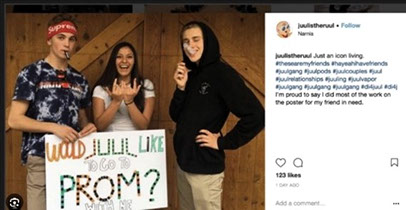
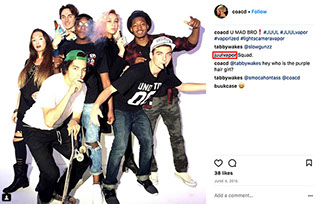
WHILE YOU WERE STREAMING
Online streaming platforms such as Netflix and Hulu are extremely popular, especially among youth. Many shows that are popular with young people often depict tobacco and e-cigarette use as cool and sexy.
The National Association of Attorneys General expressed concerns about tobacco and vaping imagery in streaming content in 2019. The organization sent several letters to major U.S. streaming services including Amazon, Apple, AT&T, Discovery, Disney, Google, Netflix, Sony and Walmart.
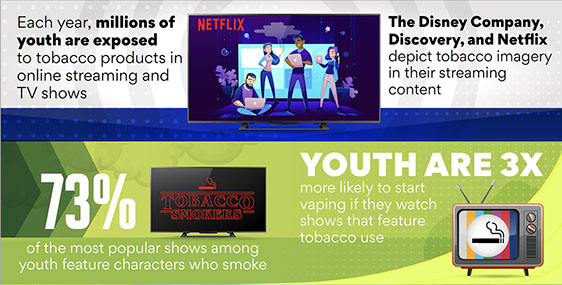

In 2019, Netflix announced they would eliminate tobacco use in youth-rated programming that was rated TV-14 or below. They determined 190+ of its original TV series contained tobacco content. In response, Netflix added a warning label at the beginning of certain programs.
CATCHING YOUR EYE
Attractive colors, eye catching designs, and youth-friendly characters like unicorns and teddy bears are marketing tactics the vaping industry places on their products to attract youth. These flashy packaging styles and trendy accessories increase sales, build brand loyalty, and mislead young people about the true risks of vaping. Let’s take a closer look at how flavors and device styles are tricking young people into using their products.
Flavors:
E-cigarettes and e-liquids come in a wide variety of sweet and fruit flavors, like candy, desserts, and other popular snacks. These flavors are often combined with mint/menthol to help mask the harshness of nicotine, making it easier for teens to experiment with and become addicted.
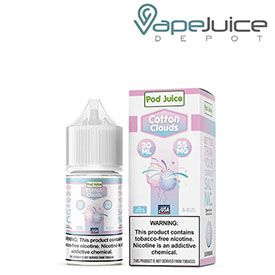
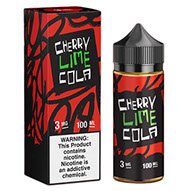
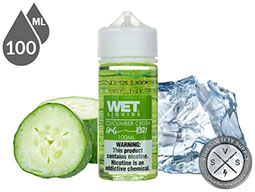
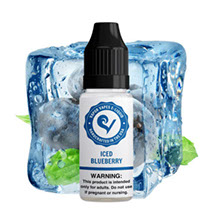
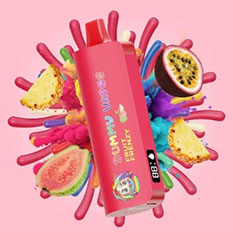
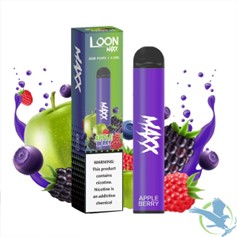
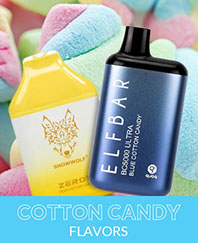
Devices:
The e-cigarette industry is constantly evolving, with manufacturers now targeting teens by incorporating technology into their devices. These gadgets can come with Bluetooth capabilities, high-definition screens, speakers, and even games like Pac-Man or Tetris, all designed to make vaping more appealing to younger users.
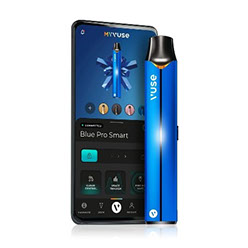
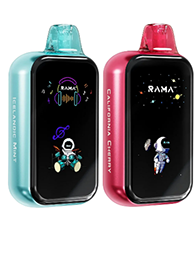
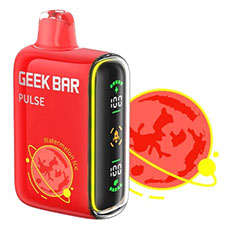
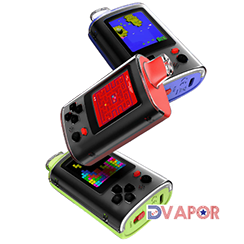
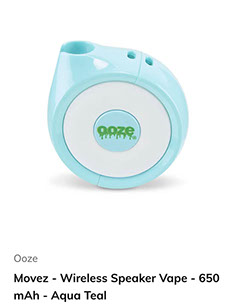
Brand manufacturers are also designing e-cigarette devices to specifically target school supplies, making it easy to hide from parents, teachers, and administrators.
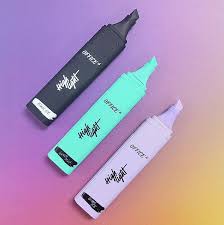
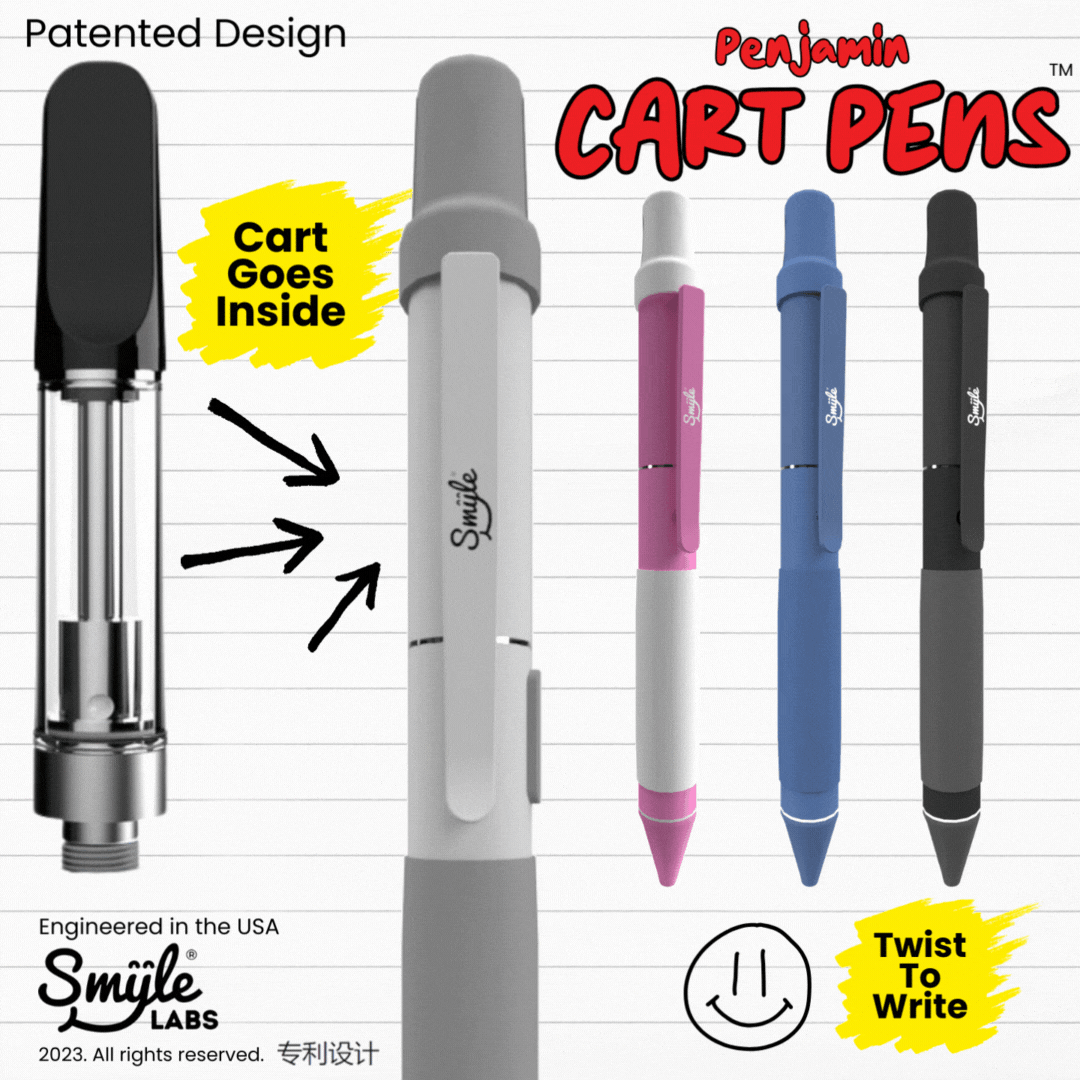
Some of these devices are disguised as everyday items like watches and car keys, allowing people to vape without drawing attention.
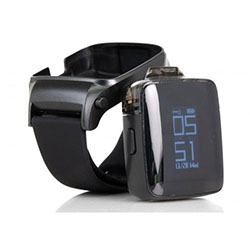
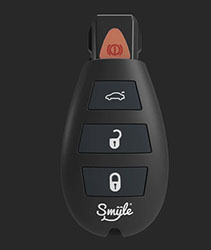
The Problem
The Solution
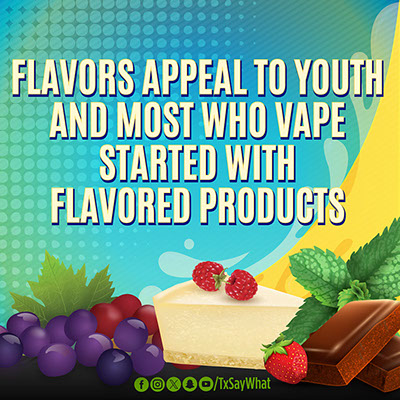
The Problem
The tobacco industry has a long history of targeting youth with flavored products. Flavors improve the taste of nicotine and mask the harshness of tobacco products. Flavored vape products, especially JUUL, are responsible for the millions of youth who are addicted to nicotine today.
One of the top reasons why young people begin using e-cigarettes is the 15,000+ flavors. In fact, most youth who vape started with a flavored product. Among middle school and high school students, fruit is the number one flavor vaped, followed by candy, mint and menthol.
There has been a growing movement to ban flavored e-cigarettes within the past few years, with the most recent ban in January 2020. The FDA announced a ban on almost all flavored vaping cartridges and pods, such as those used with JUUL devices. While these efforts are helpful in reducing youth vaping rates, it does not include mint and menthol flavored pod-based devices, disposable devices like Puff Bar, and other refillable or tank-based e-cigarettes.
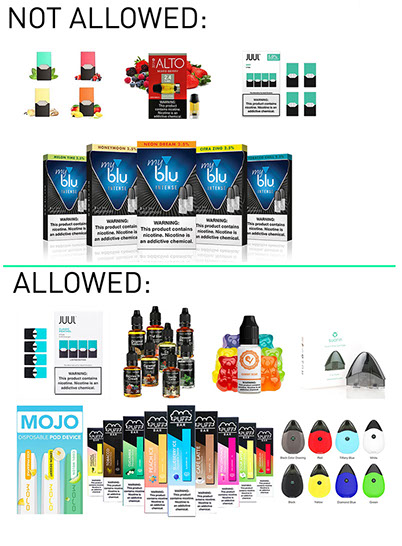
The Solution
There has been a growing movement to ban flavored
e-cigarettes over the past few years. Here are a few notable moments:
January 2020
The FDA announced a ban on almost all flavored vaping cartridges and pods, such as those used with JUUL devices. While these efforts were helpful in reducing youth vaping rates, it did not include mint and menthol flavored pod-based devices, disposable devices like Puff Bar, and other refillable tank-based e-cigarettes.
August 2021
The FDA blocked the sale of more than 55,000 flavored e-cigarette products as a part of their efforts in reducing tobacco-related disease and death. This action included flavors like Apple Crumble, Dr. Cola and Cinnamon Toast Cereal.
July 2024
FDA created an organizational committee to address all the illegal vapes entering the country. They also established new regulations, approving only three e-cigarette manufacturers and 23 products for sale in the U.S.
To hear more dirty tricks about the vaping industry and the brand that started it all, JUUL, check out:
The Vaping Fix – a podcast by Wondery – available on Apple Podcast and Spotify
Move Fast and Vape Things – a documentary by the New York Times – available on FX and HULU
Sources for module 2 include Truth Initiative, Campaign for Tobacco-Free Kids, and Food & Drug Administration.
Training Module
Modules
Home
Say What! EST. 2011
Phone
512.245.8082
Mailing Address
Texas School Safety Center
ATTN: Say What Program
Texas State University
601 University Drive
San Marcos, TX 78666

Say What! was created and designed by young people from across Texas and connects students interested in eliminating tobacco from their schools and communities. The Say What! movement is funded by the Texas Department of State Health Services through a contract with the Texas School Safety Center at Texas State University.

